ROBERT INDIANA: THE AMERICAN DREAM AT PACE GALLERY NEW YORK
May 9, 2025 – August 15, 2025
ROBERT INDIANA: THE
AMERICAN DREAM AT PACE GALLERY NEW YORK
May 9, 2025 – August 15,
2025
Pace is pleased to
announce that it will present Robert Indiana: The American Dream, a major
exhibition including seminal examples of paintings and sculpture created by the
artist beginning in the early 1960s and developed throughout subsequent decades
of his artistic career, to be shown at its 540 West 25th Street gallery in New
York from May 9 to August 15. Examining Indiana’s critique of the duality of
the American Dream—both its promise and its privations—this exhibition will
highlight the connections between the artist’s personal history and the social,
political, and cultural realities of postwar America. Reflecting on the
critical and political underpinnings of Indiana’s work, as well as his enduring
impact as an artist, Pace’s presentation will include loans from several
prominent institutions.
One of the preeminent
figures in American art since the 1960s, Robert Indiana–born Robert Clark in
the state of Indiana in 1928–played a central role in the development of
assemblage art, hard-edge painting, and Pop art. Indiana, a self-proclaimed
“American painter of signs,” created a highly original body of work that
explores American identity, personal history, and the power of abstraction and
language. His legacy resonates in the work of many contemporary artists who
make the written word a central element of their oeuvre, making him one of the
most important figures in the recent history of art.
Pace’s exhibition in New
York will be accompanied by a new catalogue from Pace Publishing, which will
shed light on Indiana’s lifelong artistic engagement with both the aspirations
of the American dream and its dark underbelly–the repressed dimensions of
American history and society, from colonialism to materialism and
commodification. Among the works on view will be the 1961 painting The Calumet,
which features the names of Native American tribes, acknowledging the presence
of Indigenous life and culture within the subconscious of America; The Black
Marilyn (1967/1998), a painting that speaks to the commodification of celebrity
and desire in American mass media in the 1960s; and the painted bronze
sculpture The American Dream (1992/2015), bearing fundamental words of the
human condition: “HUG,” “ERR,” “EAT,” and “DIE.”
Oliver Shultz, Chief
Curator of Pace Gallery, says:
“In many ways, Indiana is
an artist whose work has been eclipsed by its own fame. This exhibition is
about rediscovering the real Indiana, the radical and probing artist he really
was. Both a pioneer and an outlier in the 1960s, the impact of his efforts to
imbue formalist abstraction with content is difficult to overstate. Indiana’s
work of the sixties reveals the true nature of the American dream as a
dialectic: even as it uplifts, it also oppresses. Even as it offers the
grandest of aspirations, it remains founded in a history of violence that lies
embedded in language itself.”
Pace’s presentation will
also include works from Indiana’s iconic LOVE series, recontextualizing this
important and well-known image within his broader practice and tying this motif
to other words and ideas—including “EAT” and “DIE”—that recur across his
paintings and sculptures, symbols of both personal and universal significance
in Indiana’s work.
Today, Indiana’s work can be found in the permanent collections of museums including the Museum of Modern Art and the Whitney Museum of American Art in New York; the Art Institute of Chicago; the National Gallery of Art, the Hirshhorn Museum and Sculpture Garden, and the Smithsonian Museum of American Art in Washington, D.C.; the San Francisco Museum of Modern Art; the Menil Collection, Houston; Tate Modern, London; the Neue Nationalgalerie, Berlin; MUMOK (Museum Moderner Kunst Stiftung Ludwig Wien), Vienna; Museum Ludwig, Cologne; the Van Abbemuseum, Eindhoven; and the Art Gallery of Ontario, Toronto, among many other institutions around the world.
In 2013, the Whitney Museum of American Art hosted the artist’s first New York retrospective, Robert Indiana: Beyond LOVE, curated by Barbara Haskell. Indiana passed away in his home in Vinalhaven, Maine, on May 19, 2018, just a few weeks before the opening of his sculpture retrospective at the Buffalo AKG Art Museum, New York (then Albright-Knox Art Gallery). Important posthumous one-artist exhibitions include, Love & Peace: A Robert Indiana Memorial Exhibition, Contemporary Art Foundation, Tokyo (2018); Robert Indiana: A Legacy of Love, McNay Art Museum, San Antonio, Texas (2020); Robert Indiana: Sculpture 1958-2018, Yorkshire Sculpture Park, West Bretton, United Kingdom (2022); Robert Indiana at Rockefeller Center, Rockefeller Center, New York (2023); and Robert Indiana: The Sweet Mystery, Procuratie Vecchie, Venice (2024), among others.
APOGEE, 1970
Oil on Canvas
Dimensions:
152.4 cm × 127 cm, Canvas
© Star of Hope Foundation, Vinalhaven, Maine
LOVE WALL,
1968
Oil on Canvas
Dimensions:
Four Panels, Overall: 61 x 61 cm
Each Panel:
30.5 x 30.5 cm
Photo: D.
James Dee. Courtesy of Sotheby’s, New York
© The Robert Indiana Legacy Initiative/Artists Rights Society (ARS), NY
USA, 1996–98
Gesso, Oil, Animal
Skull, Wood, and Iron on Wood With Stone Base
Dimensions:
243.8 × 68.6 × 68.6 cm
© The Robert
Indiana Legacy Initiative/Artists Rights Society (ARS), NY
USA, along with Die (1962/1984) and Ash (1985), is one of three constructions by Indiana to incorporate an animal skull. While in the two earlier works the skulls allude to the theme of mortality, in USA the skull, which has been painted red, white, blue, and yellow, references folk art traditions and the iconography of the American southwest, illustrating the artist’s enduring fascination with American roadside aesthetics.
The verso of USA incorporates the central element of an earlier work, Triptych, which was comprised of three wall constructions from early 1960, and exhibited in 1984 at National Museum of American Art, Smithsonian Institution, Washington, D.C, in Wood Works: Constructions by Robert Indiana. The left and right elements of Triptych were incorporated into the sculpture Hero (1992).
GRASS, 1962
Oil on Canvas
Dimensions:
25.4 × 20.3 cm
Photo:
Courtesy of Craig Starr Gallery, New York
© Star of
Hope Foundation, Vinalhaven, Maine
Grass belongs to a series of small paintings that Indiana created between 1961 and 1962. Intimate concrete word compositions, these works illustrate Indiana’s verbal-visual approach to painting. A single monosyllabic stenciled word occupies either the upper or lower segment of the canvases, and an image or field of pure color dominates the other. Indiana noted in a 1963 interview with Richard Brown Baker, “that the word, the object, and the idea are almost inextricably locked in the mind, and to divide them and break them down doesn’t have to be done.” He aimed to undo the compartmentalization of these different elements, demanding that they be read as interdependent, with the viewer losing conscious grasp of words and images as distinct.
At 10 x 8 inches Grass is one of the smaller works in the series, and it varies from the other works in that the field of color dominates almost the entire canvas. Also, the majority of the paintings in the series incorporate the short three and four letter words with which Indiana has come to be identified, while grass is a five letter word. The green color field and text suggest the literal meaning of the title, yet Indiana’s interest in themes from American literature means it can also be interpreted as a reference to Walt Whitman’s poetry anthology Leaves of Grass. This links the work to the artist’s larger literary paintings such as Year of Meteors (1961), which directly quotes a poem by Whitman that appeared in the anthology.
CHIEF, 1969
Oil on Canvas
Dimensions:
61 x 55.9 cm
Photo:
Courtesy of Paul Kasmin, New York
© Star of
Hope Foundation, Vinalhaven, Maine
This work is one of two Chief paintings. The paintings
are unusual in Indiana’s oeuvre for their incorporation of cursive letters,
which evoke the Coca-Cola logo. The word “chief” would appear again six years
later, in the same cursive script, in the painting Decade:
Autoportrait 1965 (1975).
In an interview with Susan Elizabeth Ryan (May 5, 1992) Indiana noted that it
was a reference to having met President Johnson, the Commander in Chief, when
his work was exhibited at The White House
Festival of the Arts in June
1965. The work exhibited in the festival was The Calumet (1961), whose pendant is the sculpture Chief (1962). The painting shares the same red,
yellow, and orange palette with The Calumet and the painting’s
danger stripes recall those in Chief, however the chief referrenced
in those works is Hiawatha, the precolonial Native American leader and
co-founder of the Iroquois Confederacy.
FOR, 1962
Oil on Canvas
Dimensions:
30.5 × 27.9 cm
Photo:
Courtesy of Craig Starr Gallery, New York
© Star of Hope Foundation, Vinalhaven, Maine
THE AMERICAN
DREAM, 1992
Gesso, Oil,
Wood, and Iron Wheels on Wood
Dimensions:
213.4 × 90.2 × 43.2 cm
© The Robert
Indiana Legacy Initiative/Artists Rights Society (ARS), NY
The American Dream is a principal theme of Indiana’s work, beginning with his painting The American Dream, I (1960–61). Although he completed seven paintings in the series by 1967, it was not until 1992 that the subject appeared as a sculpture, which can be considered a pendant to the series of paintings.
The American Dream, a Vinalhaven construction, was created from one of the remaining beams Indiana had salvaged on Coenties Slip, and recalls early herms such as Moon (1960) and Star (1960–62), with its four wheels down each side. The words “hug,” “err,” “eat,” and “die” are painted in stenciled letters on the front of the sculpture. These words, motifs found throughout Indiana’s work, both alone and in different combinations (for example Hug [1962] and Column Eat/Hug/Err [1963]), first appeared all together in The Demuth American Dream No. 5 (1963).
THE BLACK
MARILYN, 1967/1998
Oil on Canvas
Dimensions:
259.1 x 259.1 cm, Diamond
Artwork: ©
The Robert Indiana Legacy Initiative/
Artists
Rights Society (ARS), NY
The Black Marilyn is one of fifteen paintings by Robert Indiana that takes the actress Marilyn Monroe as its subject. Indiana began the work in 1967, the same year he painted his first Monroe themed work, The Metamorphosis of Norma Jean Mortensen. Identical in composition, The Black Marilyn employs a darker color scheme of puples against a black background. In both paintings an image of Monroe is surrounded by two rings, one containing her birth name and other the name she adopted as an actress. Also included are the years of her birth and death, ’26 and ’62.
Indiana completed The Black Marilyn over thirty years later, in 1998, inspired to return to the subject by the many books published around the thirty-fifth anniversary of the actress’s death, the death of Joe DiMaggio, and President Bill Clinton’s affair with Monica Lewinsky.
US 66 (STATES)/US 66 (CITIES), 2002
Oil on Canvas
Dimensions:
Diptych, Each Panel: 257.8 × 257.8 cm, Diamond
© Star of
Hope Foundation, Vinalhaven, Maine
The subject
of the diptych US 66 (States)/US 66 (Cities) is
Route 66, one of the original highways in the U.S. Highway System. Indiana
first referenced the highway, along with highways 40, 37, and 29, all routes on
which he had traveled, in his first and third American Dream paintings.
Numbers had specific personal meanings for Indiana, often linked to events and people in his life. Six was the number he associated with his father, who was born in June, the sixth month, worked for the gasoline company Phillips 66, and disappeared down Route 66 when he left his family. The route, which ran from Chicago, Illinois through Missouri, Kansas, Oklahoma, Texas, New Mexico, and Arizona before terminating in Los Angeles, California, covered a total of 2,448 miles. The names of the eight states through which the highway ran are incorporated into US 66 (States), and the name of a city in each of these states is incorporated into US 66 (Cities).
The colors of the paintings also recall signs that Indiana had seen along highways as a child: the red, green, and blue of US 66 (States) was inspired by the Philiips 66 sign, “standing high in a blue sky, red and green as the company colors were at the time,” and the black and yellow of US 66 (Cities) by advertising for 666 Cold Preparation, “small metal plates affixed to farmers’ fences—black and yellow—dotted the pastures and fields like black-eyed susans in perennial bloom.” [1]
NEW GLORY
PENNY, 1963
Oil on Canvas
Dimensions:
Diptych, Each Panel: 61 × 61 cm
© The Robert Indiana Legacy Initiative/Artists Rights Society (ARS), NY
In 1963 the
magazine Art in America (Vol. 51, No. 2)
commissioned six sculptors to redesign the currency of the United States as a
sequel to its 1961 stamp feature, in which six artists were commissioned to
design U. S. postage stamps. These commissions were based on the belief “that
the best artists of the time should be involved in the everyday life of the
people, and that this concept should be encouraged by the government.” Indiana
was assigned the penny, which he designed polychromatically and decagonally for
plastic, noting that it “would be a welcome change from the familiar copper
coins long in use.” The painting New Glory Penny, a slight variation
of his design for the coin, was reproduced on the magazine’s cover, and
included in the 1963 Guggenheim Museum exhibition, Coins Designed by Sculptors.
USA 666 (THE
SIXTH AMERICAN DREAM), 1964–66
Oil on Canvas
Dimensions:
Five Panels, Overall: 259.1 × 259.1 cm, X-Format
Each
anel: 129.5 × 129.5 cm (Diamond)
Photo:
Courtesy of Christie’s, New York
© The Robert Indiana Legacy Initiative/Artists Rights Society (ARS), NY
THE IMPERIAL
LOVE, 1966
Oil on Canvas
Dimensions:
Diptych, Overall: 182.9 × 365.8 cm
Each
Panel: 182.9 × 182.9 cm
© The Robert Indiana Legacy Initiative/Artists Rights Society (ARS), NY
The diptych Imperial LOVE made its debut in
1966 at the Stable Gallery, in what became known as the “LOVE Show.” It was also included in the 1967 Annual Exhibition of Contemporary American Painting at
the Whitney Museum of American Art, and in 1968 it was illustrated on the cover
of Messiaen’s Turangalîla-Symphonie, recorded by
the Toronto Symphony, led by Seiji Ozawa. The title of Messiaen’s symphony is
Sanskrit for “song of love.”
MISSISSIPPI,
1965
Oil on Canvas
Dimensions:
177.8 × 152.4 cm
Robert B.
Mayer Family Collection
© The Robert Indiana Legacy Initiative/Artists Rights Society (ARS), NY
A DIVORCED
MAN HAS NEVER BEEN THE PRESIDENT, 1961–62
Oil on Canvas
Dimensions:
152.4 × 121.9 cm
Sheldon
Museum of Art, University of Nebraska -Lincoln.
Gift of
Philip Johnson (U-581.1968)
Photo:
Courtesy of the Sheldon Museum of Art, University of Nebraska
© The Robert
Indiana Legacy Initiative/Artists Rights Society (ARS), NY
A Divorced Man Has Never Been the President is a commentary on moral hypocrisy, on the contradictory relationship between national morals as practiced in every day life, and as perceived in the political arena. Specifically, it refers to Nelson Rockefeller, who before his 1961 divorce was favored for the Republican presidential nomination.
The palette of A Divorced Man Has Never Been the President is largely composed of the colors of the American flag, although green, a color often associated with envy, is also incorporated. The work’s composition is one found in many of Indiana’s paintings from the early 1960s—a circle containing text within its outer perimeter dominates the canvas, and is placed above stenciled letters indicating the title of the work. Inside the circle of this painting is a blue star, surrounded by five green circles containing the text “US.” The text can be read both as the initials of the United States and as “us,” the latter suggesting public judgment, and perhaps envy. The five-pointed star, a symbol of both patriotism and fame, represents the leader, judged by the public surrounding him.
THE AMERICAN
STOCK COMPANY, 1963
Oil on Canvas
Dimensions: 152.4 x 127 cm
Photo: Courtesy of the Whitney Museum of American Art, New York
© The
Robert Indiana Legacy Initiative/Artists Rights Society (ARS), NY
The American Stock Company is one of a series of paintings on the theme of American industry and power, which Indiana began in 1961. The works, which also include The Great Reap (1961), The American Reaping Company (1961), The Fair Rebecca (1961), The Rebecca (1962), and The American Gas Works (1961–62), critique the optimistic narrative of American consumerism and industry during the postwar years.
FLORIDA, 1966
Oil on Canvas
Dimensions:
177.8 × 152.4 cm
© The Robert Indiana Legacy Initiative/Artists Rights Society (ARS), NY
THE BLACK
YIELD BROTHER III, 1963–64
Oil on Canvas
Dimensions:
215.9 × 215.9 cm, Diamond
Photo:
Courtesy of Christie’s, New York
© Star of
Hope Foundation, Vinalhaven, Maine
The Black Yield Brother III is the third painting in Indiana’s Yield Brother
series. Throughout his career Indiana addressed contemporary political issues
and supported causes he believed in. The first painting from the series, Yield Brother (1963),
was painted expressly for the Bertrand Russel Peace Foundation, which held
a benefit exhibition in
1963, and The Black Yield Brother III was donated to
the Congress of Racial Equality (CORE) for its 1964 benefit sale.
The series was inspired by yield street signs, with the colors of the third painting inspired specifically by a damaged New York traffic sign that Indiana had acquired. In these works the concept of yield, to give the right of way, is turned into a political message. Indiana explained that that he adopted “the Biblical language of Yield Brother” to address a civilization which is supposed to be governed by Christian ethics. [1] Yet he noted “That the countryside is peppered with ‘Yield’ sides hasn’t affected the national conscious much—particularly in our least yielding region entrenched as it is in the doctrine of White Supremacy.” [2]
The first painting in Indiana’s Yield Brother series incorporates the Campaign for Nuclear Disarmament’s peace symbol, designed by Gerald Holtom in 1958. The symbol stands for “nuclear disarmament,” and is based on the “N” and “D” of the semaphore alphabet used by sailors to communicate from a distance with flags. The other works in the series, including The Black Yield Brother III, incorporate only the central element of the symbol, the vertical line which represents “D,” and stands for “disarmament.”
FLAGELLANT,
1963/1969
Gesso, Oil,
Iron, and Rope on Wood
Dimensions:
H. 63 1/2 in. (161.3 cm)
Collection of the McNay Art Museum, Gift of The Tobin Foundation
for Theatre Arts in Honor of the Close Personal Friendship
Between Robert L. B. Tobin and Robert Indiana
The Robert Indiana Legacy Initiative/Artists Rights Society (ARS), NY
RED SAILS,
1963
Oil on Canvas
Dimensions:
152.4 × 127 cm
Photo:
Courtesy of Sotheby’s, New York;
© Star of Hope Foundation, Vinalhaven, Maine
THE CALUMET,
1961
Oil on Canvas
Dimensions:
(228.6 cm × 213.4 cm)
(245.4 cm ×
229.9 cm × 12.4 cm), Frame
Rose Art
Museum, Brandeis University,
Gevirtz-Mnuchin
Purchase Fund, 1962.77
JESUS SAVES, 1969
Oil on Canvas
Dimensions: 86.4 x 86.4 cm, Diamond
Photo: D. James Dee. Courtesy of Sotheby’s, New
York
© Star of Hope Foundation, Vinalhaven, Maine
LOVE (THE
AMERICAN LOVE), 1966–2000
Conceived:
1966; Executed: 2000
Polychrome
Aluminum
Dimensions:
91.4 × 91.4 × 45.7 cm
The Robert Indiana Legacy Initiative/Artists Rights Society (ARS), NY
NEW CASTLE,
1969
Oil on Canvas
Dimensions:
152.4 × 127 cm
© Star of
Hope Foundation, Vinalhaven, Maine
New Castle is an
important example of Indiana’s paintings dedicated to geographical sites of
personal significance. The work celebrates his place of birth, the small town
of New Castle, located in central Indiana. Not only did the artist return to
themes dealing with the state throughout his career, in 1958 he changed his
name from Clark to Indiana, a name chosen both to help him stand out in the New
York art scene and to connect him to his Midwestern roots.
New Castle‘s shades of brown conjure images of the soil of the corn and wheat fields that surrounded the town, or more broadly the humble character of Midwestern life. The phrase “No. 1,” inscribed at the top of the canvas, has autobiographical resonance, proclaiming New Castle as the first of the many geographical locations that played a role in Indiana’s life, and also signifies the idea of the individual. “BIG BLUE,” emblazoned in bright red against a vivid blue backdrop, refers to the Big Blue River that runs through New Castle and its environs.
At the center of the composition is a reference to Highway 38, which runs east-west through New Castle, part of the complex network of intersecting roads, railroad lines, and highways that earned the state of Indiana the nickname “Crossroads of America.” Framed in a circle at the heart of canvas, it alludes to the highway signs that Indiana so often adapted as important symbolic and aesthetic elements of his art. The reference to the highway situates New Castle as one of the many towns through which Indiana would travel in his peripatetic childhood. Automobiles were also one of the products manufactured in factories around the area where Indiana grew up, and the formal treatment of the number 38 and the words “BIG BLUE,” which boldly project from a single vanishing point at the center, suggests the speed of a car rushing forward down the highway.
MS AMERICA,
2001
Oil on Canvas
Dimensions:
177.8 x 152.4 cm
© Star of Hope Foundation, Vinalhaven, Maine
TERRA HAUTE,
1960
Oil on Canvas
Dimensions:
152.4 × 91.4 cm
Indiana State
Museum and Historic Sites, Indianapolis
Photo: Todd
White Art Photography
© The Robert
Indiana Legacy Initiative/Artists Rights Society (ARS), NY
Terre Haute is really what I would consider, for me, a landscape. Terre Haute is about geography. Terre Haute is probably one of my less autobiographical paintings. I’ve never lived in Terre Haute and never really had any particular Terre Haute experiences. The fascination there was simply the eccentricity of the fact that a little Indiana town would bear such a fancy name . . .
— Robert Indiana
THE DEMUTH
FIVE, 1963
Oil on Canvas
Dimensions: 162.6 x 162.6 cm, Diamond
Photo: Courtesy of Paul Kasmin Gallery, New York;
© The Robert Indiana Legacy Initiative/Artists Rights Society (ARS), NY
ROBERT INDIANA
One of
the preeminent figures in American art since the 1960s, Robert Indiana played a
central role in the development of assemblage art, hard-edge painting, and Pop
art. Indiana, a self proclaimed “American painter of signs,” created a highly
original body of work that explores American identity, personal history, and
the power of abstraction and language, establishing an important legacy that
resonates in the work of many contemporary artists who make the written word a
central element of their oeuvre.
Robert Indiana was born
Robert Clark in New Castle, Indiana on September 13, 1928. Adopted as an
infant, he spent his childhood moving frequently throughout his namesake state.
His artistic talent was evident at an early age, and its recognition by a first
grade teacher encouraged his decision to become an artist. In 1942, Indiana
moved to Indianapolis in order to attend Arsenal Technical High School, known
for its strong arts curriculum. After graduating he spent three years in the
U.S. Air Force and then studied at the Art Institute of Chicago, the Skowhegan
School of Sculpture and Painting in Maine, and the Edinburgh College of Art in
Scotland.
In 1956, two years after
moving to New York, Indiana met Ellsworth Kelly, and upon his recommendation
took up residence in Coenties Slip, once a major port on the southeast tip of
Manhattan. There he joined a community of artists that would come to include
Kelly, Agnes Martin, James Rosenquist, and Jack Youngerman. The environment of
the Slip had a profound impact on Indiana’s work, and his early paintings
include a series of hard-edge double ginkgo leaves inspired by the trees which
grew in nearby Jeannette Park. He also incorporated the ginkgo form into his
nineteen-foot mural Stavrosis (1958),
a crucifixion pieced together from forty-four sheets of paper that he found in
his loft. It was upon completion of this work that Indiana adopted the name of
his native state as his own.
Indiana,
like some of his fellow artists, scavenged the area’s abandoned warehouses for
materials, creating sculptural assemblages from old wooden beams, rusted metal
wheels, and other remnants of the shipping trade that had thrived in Coenties
Slip. While he created hanging works such as Jeanne d’Arc (1960–62) and Wall of China (1960–61), the majority were freestanding
constructions which Indiana called “herms” after the sculptures that served as
boundary markers at crossroads in ancient Greece and Rome. The discovery of
nineteenth-century brass stencils led to the incorporation of brightly colored
numbers and short emotionally charged words into these sculptures as well as
canvases, and became the basis of his new painterly vocabulary.
Indiana quickly gained
repute as one of the most creative artists of his generation, and was featured
in influential New York shows such as New Media—New Forms at the Martha Jackson Gallery (1960), Art of Assemblage at
the Museum of Modern Art (1961), and the International Exhibition of the New
Realists at the Sidney Janis Gallery (1962). In 1961, the
Museum of Modern Art acquired The American Dream, I (1960–61),
the first in a series of paintings exploring the illusory American Dream,
establishing Indiana as one of the most significant members of the new
generation of Pop artists who were eclipsing the prominent painters of the New
York School.
Although acknowledged as
a leader of Pop, Indiana distinguished himself from his Pop peers by addressing
important social and political issues and incorporating profound historical and
literary references into his works. American literary references appear in
paintings such as The Calumet (1961)
and Melville (1961),
exhibited in 1962 in Indiana’s first New York solo exhibition, held at
Eleanor Ward’s Stable Gallery. In 1964 Indiana accepted Philip Johnson’s
invitation to design a new work for the New York State Pavilion at the New
York World’s Fair, creating a twenty–foot EAT sign
composed of flashing lights, and collaborated with Andy Warhol on the
film Eat, a silent portrait of Indiana eating a
mushroom in his Coenties Slip studio. His first European solo exhibition took
place in 1966 at Galerie Schmela in Düsseldorf, Germany, and featured his Number paintings (1964–65), a series
of works on a theme that he has explored in various formats throughout his
career.
1966
marked a turning point in Indiana’s career with the success of his LOVE
image, which had been featured in a solo exhibition at the Stable Gallery. The word love, a
theme central to Indiana’s work, first appeared in the painting 4-Star Love (1961). Love was a subject of great spiritual
significance for the artist, illustrated by the painting Love Is God (1964), which was inspired by an inscription in
the Christian Science churches he attended in his youth. Initially
experimenting with a composition of stacked letters in a series of 1964 rubbings, Indiana subsequently turned this inventive design, a
formal departure from his previous works, into different hard-edged color
variations on canvas. Indiana’s LOVE, selected by the Museum of
Modern Art in 1965 for its Christmas card, quickly permeated wider popular
culture, and was adopted as an emblem of the “Love Generation.” Appearing on a
best-selling United States Postal Service stamp (1973) and reproduced on
countless unauthorized products, the proliferation of the image led, on one
hand, to negative criticism and incorrect assumptions of the artist as a sell-out.
However, the image’s popularity more importantly emphasizes its great resonance
with large and diverse audiences, and has become an icon of modern art. The
universality of the subject, to which Indiana continued to return, is further
evidenced by his translation of LOVE into AHAVA (Hebrew) and AMOR (Spanish).
In 1978,
Indiana chose to remove himself from the New York art world. He settled on the
remote island of Vinalhaven in Maine, moving into the Star of Hope, a Victorian
building that had previously served as an Odd Fellows Lodge. After a period
spent setting up his home and new studio, Indiana turned to themes that related
to his local experience, working on a suite of eighteen large-scale paintings
known as The Hartley Elegies (1989–94), inspired by the German Officer
paintings of Marsden Hartley, who lived on Vinalhaven in the summer of 1938. He
also used found objects to create sculptures such as Ash (1985) and Mars (1990), works that reflected his new
surroundings while also making reference to his past, and returned to and
expanded upon his seminal American Dream series, completing The Ninth American
Dream in 2001.
In addition to being a
painter and sculptor, Indiana has created a significant number of prints, among
them the Numbers Portfolio (1968), a collaboration
with the poet Robert Creeley, as well as many other works of graphic art,
including the poster for the opening of the New York State Theater,
Lincoln Center (1964), and the poster for the opening exhibition of
the Hirshhorn Museum of Art (1974). He designed the stage sets and costumes for
the Virgil Thompson and Gertrude Stein opera The Mother of Us
All, which was presented in 1967 at the Walker Art Center in
Minneapolis and expanded in 1976 for the Santa Fe Opera in honor of the
Bicentennial. Indiana has also created other unique projects, such as the
design for a basketball court at the Milwaukee Exposition Convention Center
Arena in 1977.
Indiana’s artwork has
been featured in numerous solo and group exhibitions around the world, and his
works are in the permanent collections of important museums such as the Museum
of Modern Art and the Whitney Museum of American Art in New York; the National
Gallery of Art, the Hirshhorn Museum and Sculpture Garden, and the Smithsonian
Museum of American Art in Washington, D.C.; the Albright-Knox Art Gallery in
Buffalo, New York; the San Francisco Museum of Modern Art; the Menil Collection
in Houston; the Currier Museum of Art, Manchester, New Hampshire; the Museum
Ludwig in Cologne, Germany; the Van Abbemuseum in Eindhoven, the
Netherlands; MUMOK (Museum Moderner Kunst Stiftung Ludwig Wien) in
Vienna, Austria; the Art Museum of Ontario in Toronto; and the Israel Museum in
Jerusalem. He has also been included in numerous international publications,
and is the subject of a number of monographs.
In 2013 the Whitney Museum of American Art hosted the artist’s first New York retrospective, Robert Indiana: Beyond LOVE, curated by Barbara Haskell. Indiana passed away in his home on May 19, 2018, just a few weeks before the opening of his sculpture retrospective at the Albright-Knox Art Gallery curated by Joe Lin-Hill. Since his passing, exhibitions of his work have been mounted at the Contemporary Art Foundation, Tokyo; Yorkshire Sculpture Park, United Kingdom (curated by Clare Lilley); and other international art spaces.



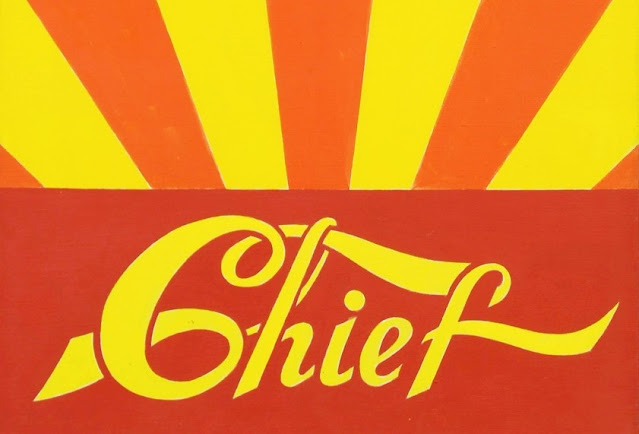










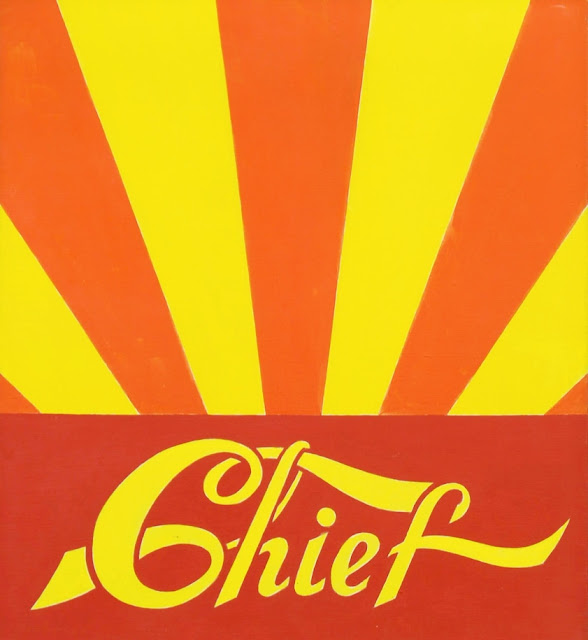



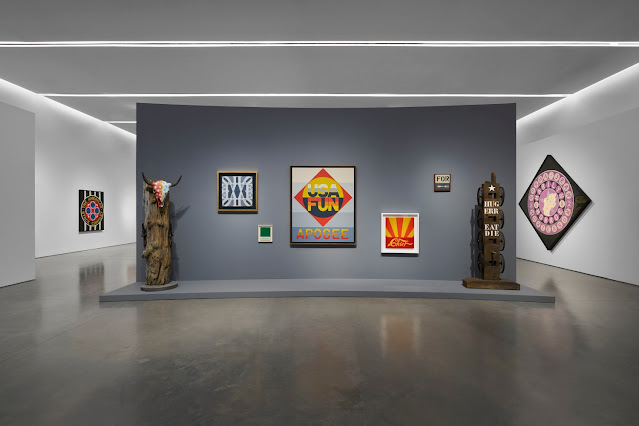




-US%2066%20(Cities)%202002.jpeg)



%201964-66.jpeg)


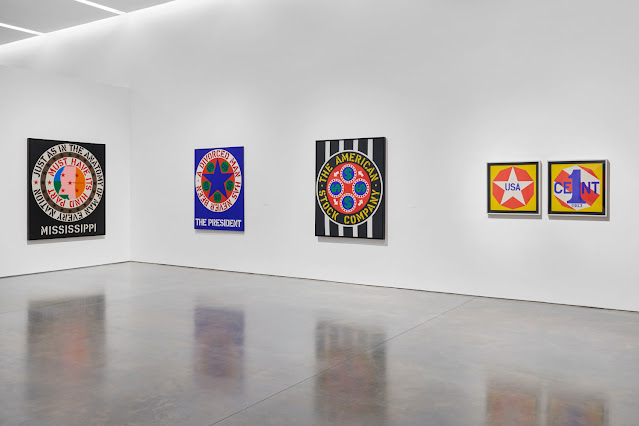







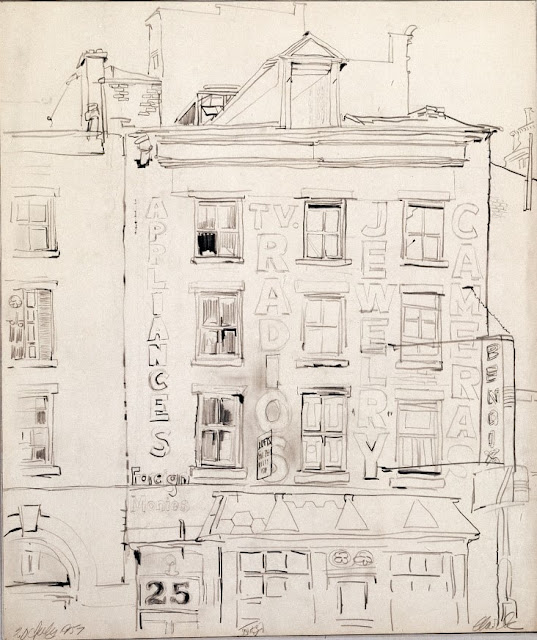

















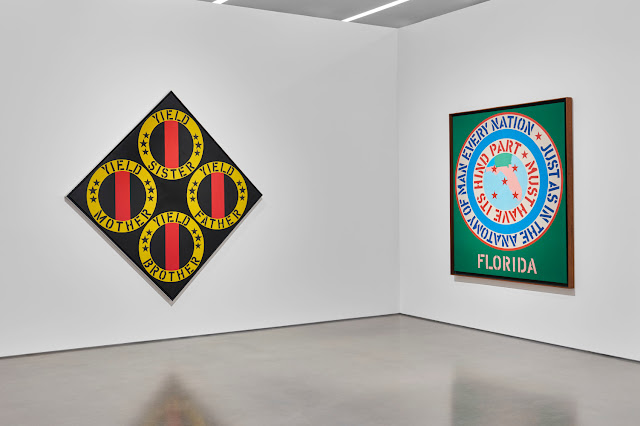
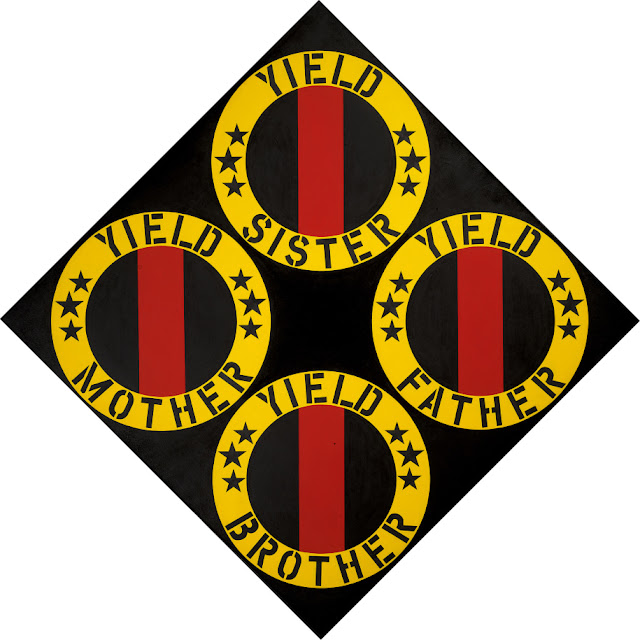

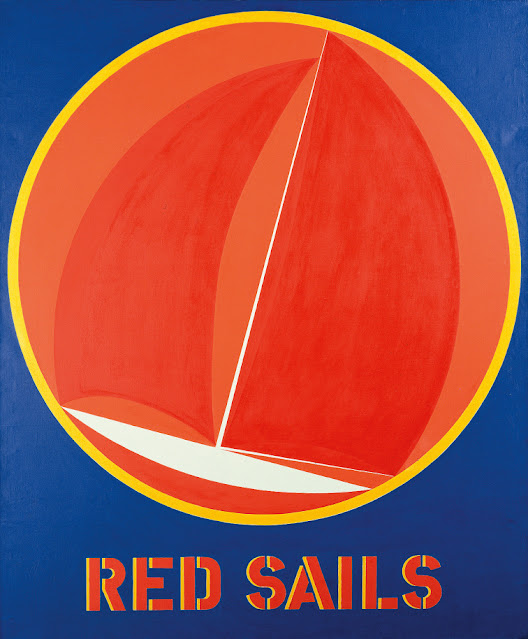


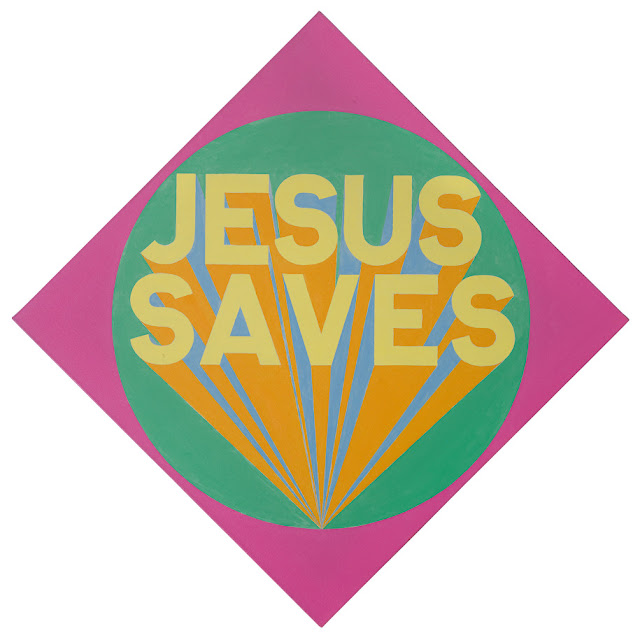



















.png)